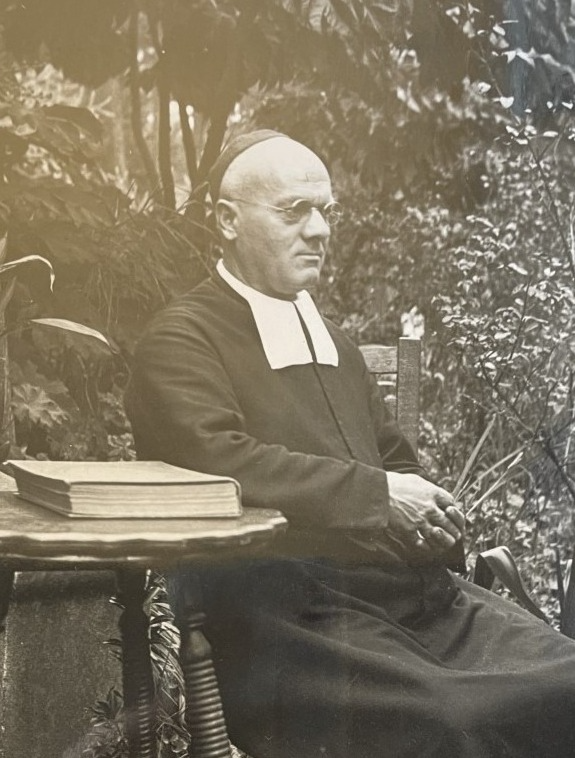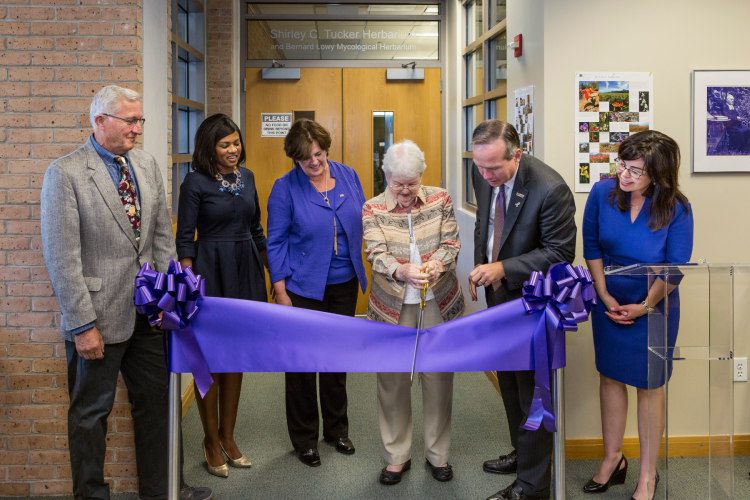Shirley C. Tucker Herbarium (LSU) History
The Shirley C. Tucker Herbarium houses the oldest and largest collection of preserved plant specimens in the Gulf South.
Originally composed entirely of specimens of vascular plants, the herbarium's taxonomic scope broadened over the years to include collections of lichens and fungi (see LSUM history), as well as bryophytes and algae. As the collection space morphed and grew over time, it was able to incorporate regional collections, such as Tulane University's Herbarium (see NO history). As a result, Gulf Coast plants, lichens, and bryophytes are well represented in the collections.
The Beginnings
Founded in 1869 by Americus Featherman, a professor of languages and the first instructor of botany at Louisiana State University, the LSU Herbarium took root. Featherman's "Report of Botanical Survey of South and Central Louisiana" is one of the state's earliest floras. His specimens represent over 700 Louisiana plants collected between 1869 and 1872, documenting the plant life of our state following the Civil War. During a fire which destroyed the first LSU campus, it was noted that "instead of saving his clothes and other possessions from the flames, he came out with his arms full of wildflowers". During the instability of the Reconstruction period, Featherman left his unpaid post but his specimens persisted.
The Expansion

Brother Arséne Brouard
– Shirley C. Tucker Herbarium's archive
Nearly a half century later, Brother Arséne Gustave Joseph Brouard botanized in Louisiana's hyperdiverse long leaf pine savanna. As a french monk, teacher, and botanist at St. Paul's College in Covington (St. Tammany Parish) he discovered a remarkable number of new species. Of the nearly 900 LSU Herbarium specimens he collected in 1919 and 1922 that represent his brief time in this state, 60 were new state records.
Earliest recorded plant collections in the state were part of the New Orleans' Academy of Sciences, and later the Tulane University Herbarium, now house together here in the Shirley C. Tucker Herbarium (see NO history). Both LSU and Tulane herbaria have collections from William Carpenter from the Felicianas, John Riddell (who published the first list of Louisiana plants), and Joseph Joor. The earliest regional specimen in the LSU Herbarium is at least as old as 1828 and collected in Texas by the famous botanist Jean Louis Berlandier. Historic specimens collected in other parts of The United States in the 1840's and 1850's include those by famous botanists Charles Short, Chales Mohr, and Arthur Schott. These early collections help us to understand the changing landscape and have become invaluable.
Clair Brown, the first official director of the LSU Herbarium, worked to transfer the original collection of Americus Featherman's Louisiana plants out of the state archives in the Cabilldo Building in New Orleans during his tenure (1926 - 1970). His popular guide book, "Wildflowers of Louisiana and Adjoining States" and interest in varied topics of botanical research, from palynology to forestry science, helped centerpiece LSU Herbarium as a place for studies of botany and systematics. He contributed nearly 8,000 specimens to the herbarium, many significant to the state. The second long-term director of the LSU Herbarium and Asteraceae specialist, Lowell Urbatsch, continued the herbarium's legacy through the merging of the Botany Department and Zoology Department into LSU's Department of Biological Sciences. With an avid field botany program, Dr. Urbatsch doubled the size of the original collections, adding over 65,000 collections since 1975. Then again, in 2016, the herbarium doubled in size under his purview.
Digitization and Current Times
A revitalization of the herbarium in the 1990's was helped by several events. In 1991, the herbarium received a large grant from the State of Louisiana to computerize the collections. A series of Associate Directors were hired to modernize the herbarium, including Mark Mayfield, Tom Wendt, and Diane Ferguson. In 1992, the Clair Brown Memorial Endowment was established, providing the initial efforts to intentionally support the longevity of the herbarium. In addition to increased staff and funding, LSU moved the herbarium to a new building, the Life Sciences Annex, completed in April 2001. The goals of the LSU Herbarium became to be the premier collection of Louisiana and Gulf Coast plants and to become a resource of international importance for the plants and fungi of the northern part of the New World Tropics.

Ribbon-cutting ceremony in honor to Dr. Shirley C. Tucker (center)
– Shirley C. Tucker Herbarium's archive
Bringing these goals to fruition, a series of National Science Foundation awards to digitize and improve the collections began in 2009, and has been ongoing and uninterrupted ever since. Transformatively, in 2015, the herbarium was generously endowed by a gift from Kenneth and Shirley Tucker. Dr. Shirley Tucker began as a biology lecturer at LSU, eventually rising through faculty's highest ranks by becoming a Boyd professor. Her strong academic achievements and generous contributions to LSU make the Shirley C. Tucker Herbarium a hub of botany for the state, drawing talented graduate students from around the world to work with professors of botany, mycology, and plant ecology whom all utilize the herbarium. A ribbon cutting ceremony held on October 15, 2015 in the herbarium, commemorated her contributions as a benefactor and scientist. With over 150 peer reviewed publications and as a former president of the Botanic Society of America and the American Society of Plant Taxonomists, Dr. Tucker leads an honorable legacy. Additionally, her lichen and bryophyte herbarium that she began building during her undergraduate years is equally impressive and one of the largest of it's kind in the southeastern USA.
Digitization of the entire herbarium, which provides at least a skeletal data record and label photograph of every specimen, was completed in 2022. The current staff work to curate, further digitize, and build the collections, maximizing support for collections based research. The Herbarium Director and Curator, Dr. Laura Lagomarsino, The Tucker Chair of Biological Sciences, Dr. Sarah Mathews, and The Herbarium Collections Manager, Jennifer Kluse, along with a team of faculty, students, staff, and volunteers, work together to steward the herbarium and build LSU's botany program.